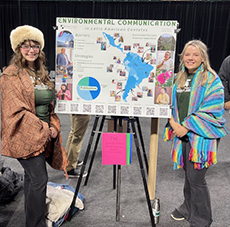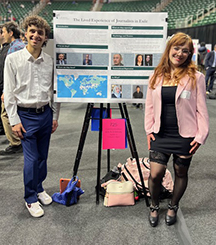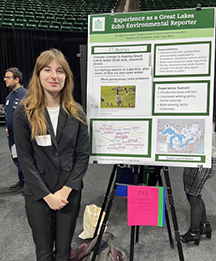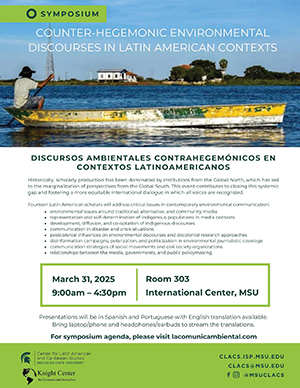Five Knight Center undergraduate assistants have presented their year-long research at MSU’s annual University Undergraduate Research and Arts Forum at the Breslin Center.

Shealyn Paulis and Anna Barnes
Shealyn Paulis and Anna Barnes, who worked with Knight Center research director Bruno Takahashi, presented their project “Environmental Communication in Latin American Context.”

Patrick Ferrino and Katherine Dyal
Katherine Dyal and Patrick Ferrino, who worked with Knight Center director Eric Freedman, presented their project “The Lived Experience of Journalists in Exile.”

Clara Lincolnhol
Clara Lincolnhol, who worked with Great Lakes Echo editor Jeff Brooks-Gilles, presented her project “Experience as a Great Lakes Echo Environmental Reporter.”

 From Monday, March 31, to Wednesday, April 2, Michigan State University’s Center for Latin American and Caribbean Studies (CLACS) and the Knight Center for Environmental Journalism will host the Counter-Hegemonic Environmental Discourses in Latin American Contexts Symposium and Workshop. The event invites researchers, staff and students to join as 14 scholars representing eight Latin American countries discuss their research in environmental communication.
From Monday, March 31, to Wednesday, April 2, Michigan State University’s Center for Latin American and Caribbean Studies (CLACS) and the Knight Center for Environmental Journalism will host the Counter-Hegemonic Environmental Discourses in Latin American Contexts Symposium and Workshop. The event invites researchers, staff and students to join as 14 scholars representing eight Latin American countries discuss their research in environmental communication.